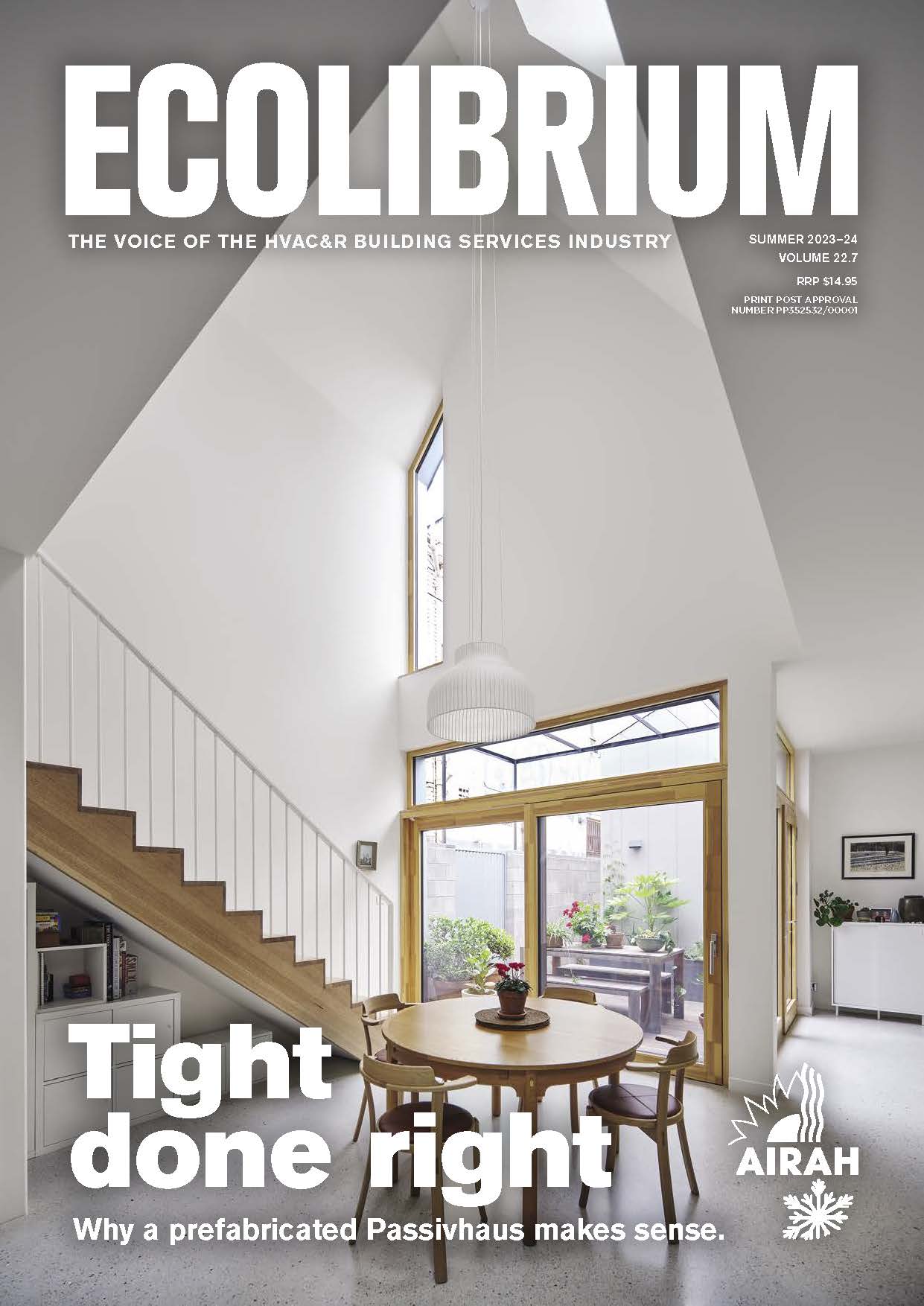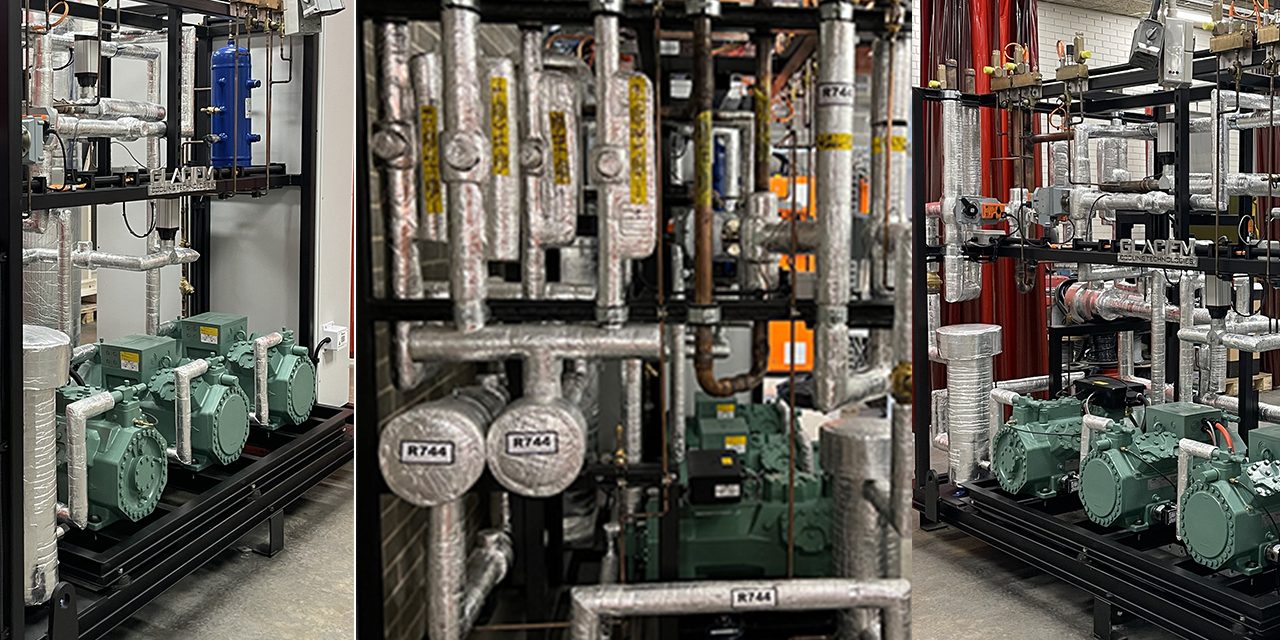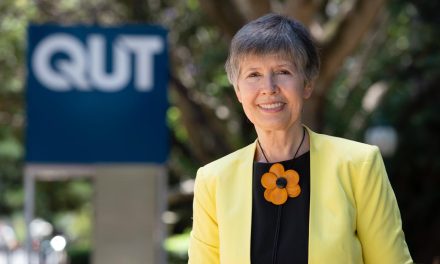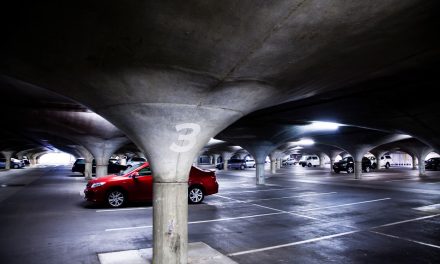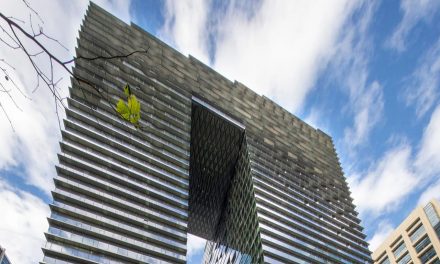Although the use of CO2 in refrigeration has become common in supermarket and retail applications, the misconception that it is limited to refrigeration alone is being undone with the trial of a direct–expansion CO2 HVAC system at Woolworths Gordon, on Sydney’s north shore. The award-winning initiative allows the use of R744/CO2 in multi-mode heat pumps to not only provide energy-efficient heating and cooling, but also dehumidification.
Just as refrigeration plays a vital role in the operation of a supermarket, HVAC that includes dehumidification is also a mission-critical function.
As well as extending product life, a supermarket’s indoor environment conditions play an important role in encouraging customers to spend more time shopping.
Historically, supermarket HVAC has sat separately to refrigeration systems – typically delivered by conventional approaches using HFC refrigerants or ozone- depleting HCFCs such as R22 in direct-expansion systems.
These usually provide cooling, with electric duct heaters used for heating. Secondary refrigerants such as chilled water and hot water use air handling units (AHUs) and fan coil units (FCUs).
Though by now well understood, such systems are often neither energy-efficient nor long-lasting in a supermarket environment, and can suffer when maintenance is inconsistent and completed to a price.
Replacing legacy systems
Woolworths has trialled the use of four-pipe heat pumps for hot water and water chillers for cooling but found them to add complexity, be unreliable, and ultimately not suitable for the firm’s upgrade strategy.
“Replacing legacy HVAC systems that were initially operating on ozone-depleting R22 often leaves the end user with little choice as far as future-proofing their investment,” says Julian Hudson, F.AIRAH, founder and technical director of Glaciem Cooling Technologies.
“Generally, water chillers for cooling and heat pumps for heating are specified, and often these replacement options are operating on synthetic greenhouse gasses.”
So, when Woolworths sought to upgrade the HVAC system serving its Gordon supermarket on Sydney’s north shore, it did so with an eye to the future. The company’s sustainability plan requires it to be a net-positive carbon emissions emitter by 2050, and to practise sustainable stewardship of natural resources.
Through a collaboration between Woolworths and Glaciem Cooling Technologies, an innovative solution has been developed that could allow the retailer to upgrade hundreds of sites running legacy HVAC technology with a sustainable platform utilising R744 (or CO2) in multi-mode heat pumps.
This technology provides energy-efficient heating, cooling and dehumidification while being able to be integrated into the existing infrastructure of Woolworths’ stores.
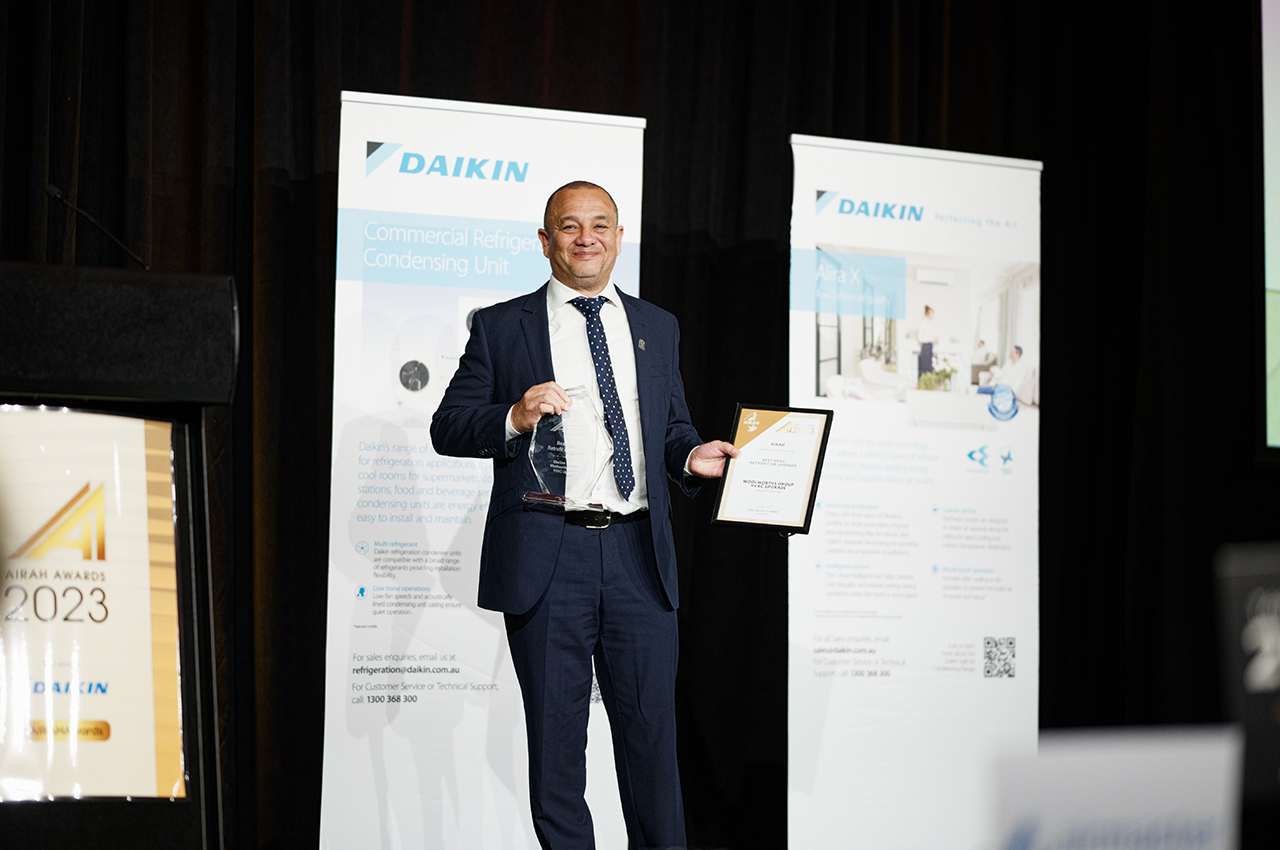
Glaciem’s Julian Hudson accepted the award for Best HVAC Retrofit or Upgrade.
“The company’s sustainability plan requires it to be a net-positive carbon emissions emitter by 2050, and to practise sustainable stewardship of natural resources”
A step change
Glaciem’s patented design – utilising R744/CO2 – delivers a system capable of direct expansion (DX) cooling, direct heating and combined cooling/heating (dehumidification), offering building owners and retail operators a clear path to long-term sustainability.
“It is a real step change in HVAC [because] the system removed the need for secondary chilled/hot water loops and their associated parasitic pumping loads by using direct expansion CO2 for cooling and a transcritical CO2 cycle for heating, with the addition of a CO2 desuperheater coil in the AHU,” says Hudson.
This design offers significant benefits over traditional secondary chilled/hot water systems.
As well as using a natural refrigerant with a global warming potential (GWP) of 1, it increases system efficiency by removing the need for the secondary system pumps. Direct expansion in the cooling coil achieves lower leaving-air temperatures in the AHU, thereby reducing fan power.
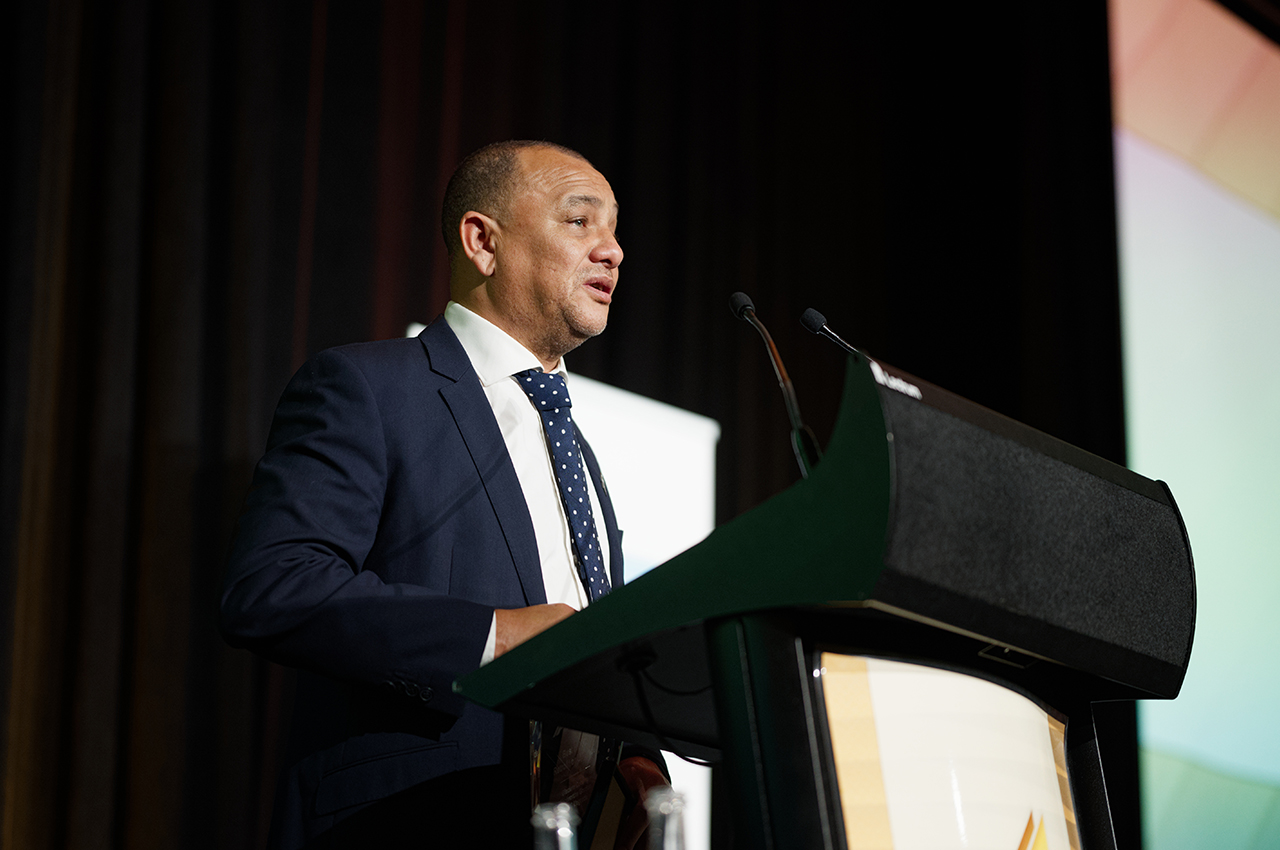
Innovators
Well known for its research and development relationship as senior industry partner to the University of South Australia, the Glaciem Cooling Technologies team has been responsible for a number of innovative R744/CO2 refrigeration designs in recent years.
Hudson says the newly developed system in place at Gordon was developed from the lessons taken from the installation and operation of an R744/CO2 cooling and heating system at the Oatmill Cinema complex in Mount Gambier (as featured in Ecolibrium, August 2021).
“That project was heating or cooling only, Hudson says of the Oatmill initiative. “And the design did not allow for simultaneous heating and cooling, or dehumidification.”
This led the team at Glaciem to develop an innovative design that incorporates a series of three-way modulating valves controlled by proprietary software, as well as the integration of ambient cooling coils as part of the CO2 gas cooler.
The development allows the use of R744/CO2 in multi-mode heat pumps to not only provide energy-efficient heating and cooling, but also dehumidification, making it particularly suitable in a supermarket environment.
“This new design is patented in Australia,” Hudson explains, “and is about to enter the international phase under the Patent Cooperation Treaty (PCT).”
Industry ready
Glaciem designed and supplied all capital equipment for the Woolworths Gordon HVAC upgrade to Woolworths.
Site installation works were conducted by New South Wales contractor Protech Air Conditioning and Electric Solutions, and Beaton’s HVAC & Refrigeration, with assistance provided to Glaciem during commissioning.
Importantly, this system installed at Woolworths Gordon is able to be serviced and maintained by Woolworths’ existing approved transcritical CO2 refrigeration contractors.
“The uptake of CO2 as a refrigerant in the commercial and industrial refrigeration sectors has also increased (its) exposure and training of technicians who have the relevant skills to service and maintain equipment,” Hudson says.
Though specific energy savings from the trial have not been made available, the performance of the system since commissioning is said to be outstanding, with a cooling COP (coefficient of performance) of >5, and a heating COP of >6.
Given this performance, Glaciem expects the use of CO2 to soon extend beyond supermarkets to the commercial building sector.
“In recent years, architects, consultants and building owners have come up with new and innovative ideas and designs to improve the energy efficiency of commercial buildings,” Hudson says. “However, the heating and cooling of these built environments has remained relatively static.
“Cooling and heating of commercial buildings has largely been done by VRF/VRV systems or more efficient secondary chilled/hot water systems (where) chilled water is provided by chiller systems operating on synthetic refrigerants and hot water is provided by gas boilers.
“CO2 is non-flammable, non-toxic and has a GWP (global warming potential) of 1, offering building owners a new, definitive sustainable pathway for their building HVAC.”
“This system installed at Woolworths Gordon is able to be serviced and maintained by Woolworths’ existing approved transcritical CO2 refrigeration contractors”
The Woolworths Gordon upgrade won the Best HVAC Retrofit/Upgrade category at the 2023 AIRAH Awards.
Project at a glance
The Personal
Client: Woolworths Group
Mechanical services engineer: Glaciem Cooling Technologies
Mechanical services contractors:Protech Airconditioning & Electrical Solutions, Beaton’s HVAC & Refrigeration
Project Manager and consultant: DBAC Services (Matt Foster)
The Equipment
Compressors: Bitzer
Heat exchangers: Alfa Laval
Electrical and PLC: Schneider
Evaporators and gas coolers: Modine
Oil separator/reservoir, pressure-relief valves: Henry
Control valves: Refrigera, Danfoss
